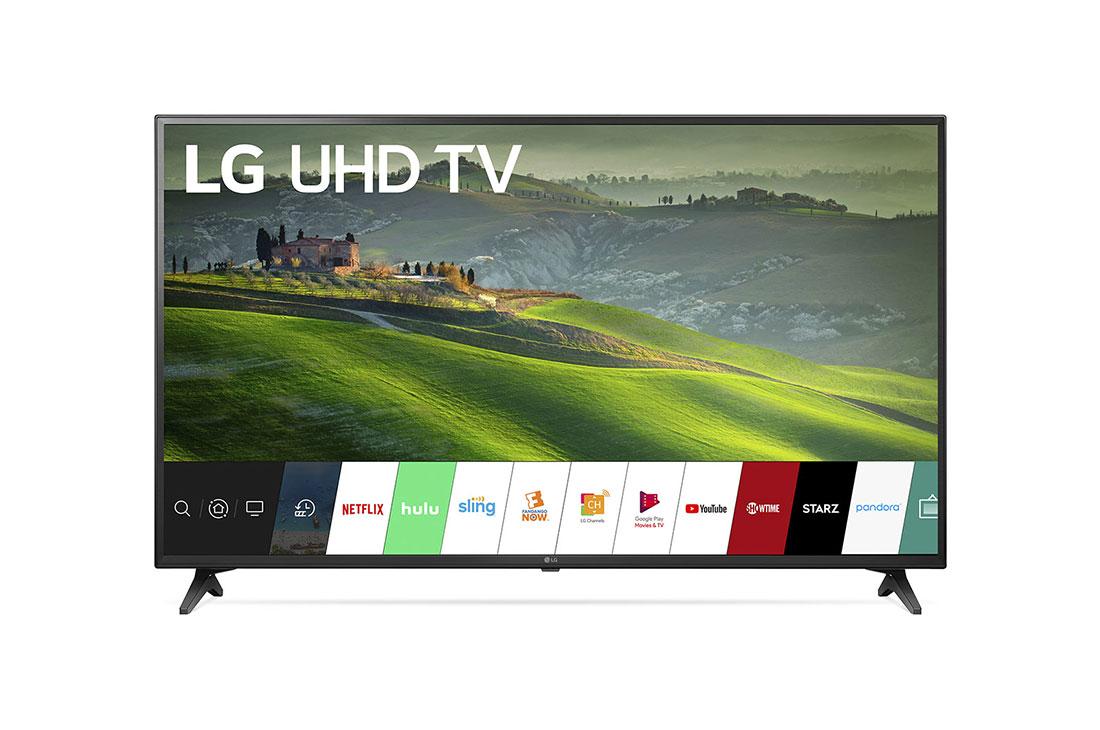Top 10 Best Smartphones of 2023
In today’s digital age, smartphones have become an integral part of our lives. From communication and entertainment to productivity and beyond, these compact devices have revolutionized the way we live and work. However, with the rapidly evolving smartphone landscape, choosing the right device can be a daunting task. In this comprehensive guide, we will explore the top 10 best smartphones of 2023, taking into consideration the latest technological advancements and the unique features that set them apart.
Before diving into the list, it’s essential to understand the factors to consider when selecting a smartphone that suits your needs. Let’s take a look at what to keep in mind during the decision-making process.
Choosing the right smartphone: Factors to consider
- Budget: Determine how much you are willing to spend on a smartphone. Set a realistic budget that aligns with your requirements.
- Operating System: Decide whether you prefer iOS, Android, or any other operating system. Research the pros and cons of each to make an informed choice.
- Size and Display: Consider the size of the device and the quality of the display. Do you prefer a compact phone or a larger one for multimedia consumption?
- Battery Life: Evaluate the battery life of different smartphones. Look for devices that offer long-lasting power to avoid the hassle of frequent charges.
- Camera Capabilities: Determine the importance of photography in your smartphone usage. Look for devices with advanced camera features if you’re a photography enthusiast.
- Storage Capacity: Assess your storage needs based on your usage patterns. Determine whether you require ample internal storage or the flexibility of expandable memory.
- Connectivity Options: Consider the connectivity options, such as 5G compatibility and Wi-Fi capabilities, to ensure a seamless and fast mobile experience.
- Security Features: Evaluate the security features offered by different smartphones. Look for advanced biometric authentication methods and robust encryption.
- Design and Ergonomics: Assess the design and build quality of smartphones. Consider factors like durability, water resistance, and overall aesthetics.
II. Technological Advancements in 2023
In 2023, smartphones are poised to reach new heights in terms of technological advancements. The ever-accelerating innovation in this domain promises cutting-edge features that enhance the user experience.
Overview of cutting-edge smartphone innovations
- Artificial Intelligence Integration: Expect smartphones to utilize AI technologies for better performance, enhanced camera capabilities, and seamless voice and image recognition.
- Augmented Reality (AR) Enhancements: AR capabilities in smartphones will further evolve, enabling immersive experiences in gaming, shopping, and more.
- Improved Processor Performance: Rapid advancements in chipsets will elevate smartphone performance, allowing for seamless multitasking and resource-intensive applications.
- Enhanced Biometric Authentication: Biometric authentication methods like facial recognition and under-display fingerprint scanners will become more secure and accurate.
- Flexible Displays: Foldable smartphones with flexible displays will become more prevalent, offering increased screen real estate without compromising portability.
- Advanced Camera Technologies: Smartphone cameras will continue to improve, with developments in low-light photography, optical zoom, and computational photography.
- Extended Battery Technologies: Expect smartphones with improved battery technologies, such as faster charging capabilities and increased longevity.
- IoT Integration: Smartphones will play a central role in connecting and controlling various IoT devices, creating a seamless smart home experience.
Impact of 5G technology on smartphone capabilities
The advent of 5G technology promises to revolutionize the way we interact with our smartphones. With significantly faster download and upload speeds, reduced latency, and increased network capacity, 5G technology will create a new era of connectivity.
- Ultra-Fast Internet Connectivity: Experience lightning-fast internet speeds on your smartphone, enabling smooth streaming, online gaming, and rapid file transfers.
- Real-Time Communication: 5G technology will significantly enhance real-time communication services like video calls and conferencing, making them more immersive and seamless.
- IoT Expansion: The proliferation of 5G networks will accelerate the growth of IoT devices, allowing for smart home automation and a more interconnected world.
- Multimedia Streaming: Enjoy high-quality streaming on your smartphone without buffering or lag, even for 4K and VR content.
- Cloud Gaming: 5G technology will enable cloud-based gaming on smartphones, eliminating the need for powerful hardware and expanding gaming access.
Criteria for Evaluating the Best Smartphones
When choosing the best smartphones of 2023, several key factors come into play. Ensuring top-notch performance, excellent display quality, cutting-edge camera capabilities, and reliable battery life are vital to delivering an exceptional user experience.
Performance and processing power
A smartphone’s performance and processing power play a significant role in smooth multitasking, quick app launches, and overall responsiveness. Factors to consider include:
- Next-Generation Processors: Look for smartphones powered by state-of-the-art processors, such as Qualcomm Snapdragon or Apple A-series chips. These will provide the necessary horsepower for demanding applications and gaming.
- RAM and Storage: Ample RAM (Random Access Memory) ensures smoother multitasking, while sufficient storage space allows you to store your apps, photos, videos, and other important data without running out of space.
Display quality and resolution
The display is one of the most critical aspects of a smartphone, as it directly impacts the visual experience. When evaluating a smartphone’s display quality, consider the following:
- Resolution: Look for smartphones with high-resolution displays, such as QHD+ or even 4K, for crisp visuals and vibrant colors.
- Refresh Rate: Higher refresh rates, such as 90Hz or 120Hz, result in smoother scrolling, reduced motion blur, and an overall more fluid experience.
- HDR Support: High Dynamic Range (HDR) support provides enhanced contrast, richer colors, and improved detail in both photos and videos.
Camera capabilities and features
With smartphone cameras taking center stage in the era of social media and photography, evaluating camera capabilities is crucial. Factors to consider include:
- Sensor Quality: Look for smartphones with larger camera sensors, as they excel in capturing more light, resulting in better low-light performance.
- Aperture Size: A wider aperture allows more light to enter the camera sensor, resulting in brighter and sharper images, especially in low-light conditions.
- Number of Cameras: Dual, triple, or even quad-camera setups provide versatility and allow for different types of shots, including wide-angle, ultra-wide, and zoom.
- Software Optimization: A well-optimized camera software interface and intelligent algorithms can significantly improve image processing and produce stunning results.
Battery life and charging technology
Long-lasting battery life and efficient charging technologies are essential considerations for any smartphone user. Factors to keep in mind include:
- Battery Capacity: Evaluate the battery capacity of smartphones and choose one that suits your usage patterns, ensuring it meets your daily needs without frequent recharging.
- Fast Charging: Look for smartphones with fast charging capabilities, such as Qualcomm Quick Charge or USB Power Delivery, to reduce downtime while charging.
- Wireless Charging: Consider smartphones that offer wireless charging support, providing added convenience and eliminating the need for cables.
Operating system and software updates
The operating system (OS) of a smartphone dictates its overall user experience, functionality, and security. Consider the following factors:
- iOS vs. Android: Decide whether you prefer iOS or Android, considering factors such as ecosystem compatibility, app availability, and personal preferences.
- Software Updates: Ensure that the smartphone manufacturer regularly provides software updates, as they not only bring new features but also address security vulnerabilities and improve performance.
Advances in Smartphone Security
With the increasing amount of personal data stored on smartphones, security features have become a top priority. In 2023, smartphones are equipped with cutting-edge security technologies that protect user privacy and data. From facial recognition and fingerprint scanners to advanced encryption algorithms, these security features ensure a safe and secure user experience. Privacy protection and data security are ongoing trends in the smartphone industry, with manufacturers striving to provide robust safeguards against potential threats.
Emerging Trends in Smartphone Design
Smartphone design trends continue to evolve, adapting to user preferences and technological advancements. One of the notable emerging trends is the introduction of foldable smartphones. These devices offer a unique folding mechanism, expanding the screen size when needed and providing a compact form factor for portability. Additionally, sleek and minimalist designs are gaining popularity, emphasizing simplicity and elegance.
Future Possibilities: Anticipated Smartphone Innovations
Looking ahead, we can anticipate several exciting innovations that may shape the future of smartphones. Speculations suggest breakthrough technologies such as holographic displays, even more powerful processors, improved AI integration, and enhanced virtual reality capabilities. These potential game-changers hold the promise of revolutionizing the smartphone industry in the coming years.
Top 10 Best Smartphones
iPhone 14 Pro Max:
Features
ProMotion Display:
Adapts the refresh rate to the content14.
Always-On Display:
Shows the time, date, and notifications13.
Camera:
48MP primary camera sensor.
Improved low-light performance.
8K video recording24.
Satellite Connectivity:
Enables emergency calls and messages in remote areas3.
Chipset:
A16 Bionic chipset.
Faster performance.
Better battery life24.
New Colors:
Graphite.
Gold.
Silver.
Sierra blue4
Samsung Galaxy S21 Ultra:
- Features: Exynos 2100 or Snapdragon 888 chip, 108MP camera, 5G support, S Pen compatibility.
- Pros: Stunning display, versatile camera system, strong performance.
- Cons: High price point, bulky design.
Google Pixel 6 Pro:
- Features: Google Tensor chip, advanced cameras, 5G capability, stock Android experience.
- Pros: Impressive camera quality, smooth software experience, timely updates.
- Cons: Limited availability of certain features, average battery life.
OnePlus 9 Pro
- Features: Snapdragon 888 chip, Hasselblad partnership for cameras, 5G support, fast charging.
- Pros: Fast and smooth performance, great display, capable cameras.
- Cons: No wireless charging, average battery life.
Xiaomi Mi 11 Ultra:
- Features: Snapdragon 888 chip, 50MP camera, secondary display, 5G connectivity.
- Pros: Excellent camera performance, powerful hardware, unique secondary display.
- Cons: Bulky and heavy design, limited availability in some markets.
Apple iPhone SE (2020):
- Features: A13 Bionic chip, compact size, Touch ID, affordable price.
- Pros: Affordable for an iPhone, strong performance, compact and lightweight.
- Cons: Older design, single rear camera, average battery life.
Samsung Galaxy Note 20 Ultra:
- Features: Exynos 990 or Snapdragon 865+ chip, S Pen support, 108MP camera, 5G capability.
- Pros: Large and vibrant display, versatile S Pen functionality, powerful performance.
- Cons: Expensive, bulky design.
Oppo Find X3 Pro:
- Features: Snapdragon 888 chip, 120Hz QHD+ display, versatile camera system, 5G support.
- Pros: Gorgeous display, impressive camera capabilities, fast charging.
- Cons: Limited availability, slightly expensive.
Xiaomi Redmi Note 10 Pro:
- Features: Snapdragon 732G chip, 64MP camera, AMOLED display, large battery.
- Pros: Affordable price, good camera performance, long-lasting battery.
- Cons: MIUI software can be overwhelming, average gaming performance.
Sony Xperia 1 III:
- Features: Snapdragon 888 chip, 4K OLED display, Zeiss optics cameras, 5G connectivity.
- Pros: Stunning display, professional-grade camera capabilities, sleek design.
- Cons: Expensive, bulky design, limited availability.
Summary and Conclusion
In conclusion, choosing the best smartphone can be a daunting task given the plethora of options available in the market. By considering the criteria for evaluation, exploring expert insights, and comparing smartphones based on your specific needs, you can make an informed decision. We hope this comprehensive guide has helped you gain valuable insights into the top 10 best smartphones of 2023 and the various factors to consider when choosing your next device.
Frequently Asked Questions (FAQs)
To address some common queries, here are answers to frequently asked questions regarding smartphone purchases:
- What should I consider when buying a new smartphone?
- How often do new smartphone models launch?
- How do I determine the right smartphone for my needs?
- What are the top features to look for in a smartphone?
- Are flagship smartphones the best choice for everyone?
Remember, https://babapoultryengineering.com/propecia-generiek-alles-wat-u-moet-weten/ choosing a smartphone that aligns with your needs, preferences, and budget will ensure a seamless and satisfying user experience in the ever-evolving smartphone landscape.

 Cart is empty
Cart is empty 








